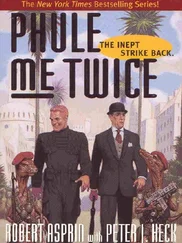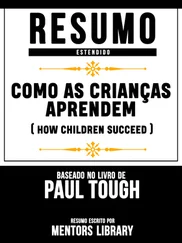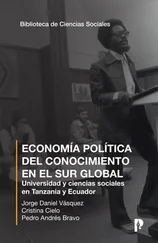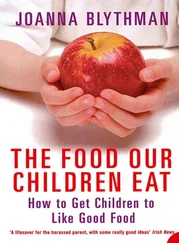I saw the attachment-promotion approach in action one recent spring afternoon on the South Side of Chicago when I visited a sixteen-year-old girl named Jacqui and her eight-month-old baby, Makayla, at the house where they lived with Jacqui’s mother. I wasn’t the only visitor—an older African American woman named Anita Stewart-Montgomery was there too, an employee of Catholic Charities who regularly visited at-risk parents (usually single mothers) and their children through a program run by the Ounce of Prevention Fund, a Chicago-based philanthropy. After the visit, I spoke to Nick Wechsler, an infant specialist who has overseen the Ounce’s home-visiting programs for more than two decades. He explained that while he and his staff do care about the traditional issues that home visitors discuss with new parents—infant nutrition and smoking cessation and vocabulary growth—they are convinced by the research that improving attachment is the most powerful lever they have for improving child outcomes. And so attachment is what they emphasize.
In fact, Wechsler said, he often has to remind home visitors in the program that it is not their job to try to fix all the many problems they see in the lives of the young parents they visit—just this one. “It’s a tremendous challenge for home visitors, because your instinct is that you want to do more,” Wechsler told me. “But even if you can’t always take away bad housing or bad schooling, you can build in the parent an inner strength and resilience, so they can be the best parent they can be.”
It was true that there was plenty to fix in Makayla’s world. As I watched her and Jacqui and Stewart-Montgomery playing and talking on the living-room rug, I found myself wishing that the house were quieter and the furniture had fewer sharp corners, that she and her mom and grandmother didn’t live next to an abandoned lot on a rough-looking block, and that we couldn’t smell the cigarette smoke from next door. But Stewart-Montgomery, to her credit, focused on Jacqui, watching her watch Makayla, making encouraging comments, expressing to Jacqui exactly the kind of warm and nurturing support that she hoped Jacqui would pass on to Makayla.
A previous generation of early-childhood interventions, developed under the influence of Hart and Risley’s research on the importance of early language skills, focused primarily on encouraging the parents to take steps to expand their children’s vocabulary. The frustrating reality about those interventions, though, is that if you are a parent and you have a limited vocabulary, which many low-income parents do, it is very hard for you to nurture in your children a rich vocabulary. Reading to them more is certainly helpful, but infants absorb language from their parents not just in dedicated vocabulary-building moments but at every moment. This is why vocabulary deficits are often handed down from one generation to the next—a cycle that a great preschool and a great kindergarten can do a lot to interrupt but that is hard to break with a parent-based intervention alone.
But what Fisher and Dozier and Cicchetti and Lieberman have demonstrated is that the potential for growth and improvement is much greater when it comes to attachment. Unlike a subpar vocabulary, anxiety-producing parenting can be undone with a relatively minor intervention. Which means that the cycle of poor attachment can be broken for good. If a low-income mother with attachment issues gets the right kind of intervention, she can become a mother who forms a secure attachment with her child. And that will potentially make a huge difference in that child’s life. If Anita Stewart-Montgomery is able to help Jacqui and Makayla form a secure attachment bond, then Makayla will not just be more likely to be a happy child. She will also be more likely to graduate from high school, to stay out of jail, to delay pregnancy, and to have a more positive relationship with her own children.
Soon after Ron Huberman, Chicago’s schools CEO, announced his plan to hire YAP’s advocates to mentor the city’s ultra-high-risk teenagers, Heather Mac Donald, an Olin fellow at the conservative Manhattan Institute, wrote a long article in the institute’s quarterly publication, City Journal, about youth violence in the city. She was critical of Huberman and YAP—and of Barack Obama, for that matter—for ignoring what she called the primary cause of Roseland’s dysfunction: “the disappearance of the black two-parent family.” She associated YAP with the work of Saul Alinsky, the left-wing twentieth-century political organizer, and complained about the “assiduously nonjudgmental” interventions she believed YAP advocates were undertaking. In their place, she proposed an intervention in which advocates acted like “Scoutmasters” and “provided their charges with opportunities to learn self-discipline and perseverance, fired their imaginations with manly virtues, and spoke to them about honesty, courtesy, and right and wrong.” That kind of tough talk, Mac Donald wrote, “might make some progress in reversing the South Side’s social breakdown.”
Oddly, though, for all of Mac Donald’s heated criticism of what she imagined YAP was doing, the reality that I heard and saw from YAP advocates looked an awful lot like what Mac Donald was proposing. Far from avoiding talk of family breakdown, advocates like Steve Gates seemed preoccupied with it, and they were quite explicit that they wouldn’t need to be doing the work they were doing if Roseland’s families were functioning the way families should.
“Take a close look at our kids’ family structures, and you get a perfectly clear picture of why they are the way they are,” Gates told me one morning. “There is a very direct correlation between family issues and what the kids present in school. The lapses in parenting, the dysfunction—it all spills over to the kids, and then they take that to school and the streets and everywhere else.”
Gates is not blind to the many other problems that young people face in Roseland; he is keenly aware of the social and economic and political forces that have so devastated the neighborhood during his lifetime. In fact, he often takes them personally. White flight, for example: In the early 1970s, when Gates arrived in Roseland as a newborn with his parents, they were one of the only black families on the block. That didn’t last long. “By the time I could walk,” Gates told me, “all the Caucasian kids were gone.” And it wasn’t just his block. In 1960, there were more than 45,000 white people living in Roseland; in 1990, there were 493. Meanwhile, the South Side’s vibrant manufacturing sector, which employed Gates’s grandfather, father, and uncles, evaporated as well, as one factory after another closed its doors or moved away. What was left behind in Roseland was a tangle of social pathologies that seemed to grow only worse each year, each problem reinforcing itself and feeding a host of others, from welfare dependency to drug addiction to gang violence.
But while Gates is careful not to blame Roseland’s parents for the neighborhood’s crisis, he has decided that for him, at least, the most effective vehicle for improving children’s outcomes is not the school or the church or even the job center; it is the family—or, if necessary, the creation of substitute or supplemental family structures for children who don’t have them. This approach certainly doesn’t have a 100 percent success rate, and in the months that I spent watching Steve Gates, he experienced countless setbacks and tragedies: teenagers he was mentoring were arrested, jailed, shot, or even killed. But sometimes it did work, and the transformations that YAP’s advocates were able to inspire in their clients were often stunning.
Читать дальше



![Коринн МакКей - How to Succeed as a Freelance Translator [calibre 3.46.0]](/books/402693/korinn-makkej-how-to-succeed-as-a-freelance-transl-thumb.webp)








